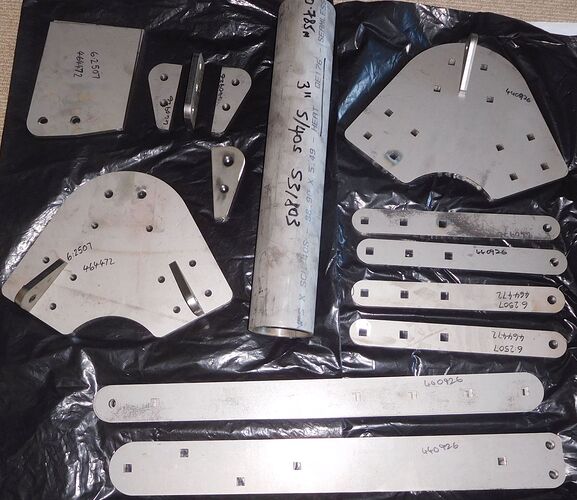Ouch!
Kudos to you, Mike, for your quick action that saved the mast, the backstay, and the boomkin.
I think you have three choices:
-
remake the plates in 316 stainless steel, knowing that it has a working life of about 20 years. 316 (whether standard or the Low carbon version) is prone to stress crack corrosion, pitting corrosion, and crevice corrosion. Any piece of ss subject to shock loads becomes embrittled (and oddly stronger at the same time it becomes more brittle). For Brion Toss’s slightly humourous (but still correct) take on why SS is one of the worst materials for chainplates, see: The Worst Possible Chainplates - All At Sea - Southeast
-
make the plates in a Nickel-Aluminium Bronze (or a Silicon Bronze - both would work). To Australians of my age, the lesson from the two men known to you as Ron and Stan (and hence the company Ronstan) is unforgettable. Ron and Stan were top dinghy racers. And they started making sailboat parts out of SS because they saw too many bronze fittings crack. Unless cast with good technique and at the right melt temperature, bronze is liable to voids and cold joints. The usual workarounds are: 1. to x-ray the bronze to check for the lack of voids and cold joints; and/or 2. to oversize the bronze.
-
to make the plates in titanium (if you can get the right alloy and a workshop able to fabricate) or in a grade of SS superior to 316.
For Zygote’s 15th year refit, we replaced almost all of her chainplates (only plates not replaced are the mast tangs and the gammon iron - all still on the job list). We chose to use duplex stainless steel (i.e. 2205, with 22% Chromium and 5% Nickel) for the chainplates for the whisker stays, shrouds, and the upper plate of the backstay. We chose super duplex SS (i.e. 2507, with 25% Cr and 7% N) for the lower backstay plate, the bobstay fitting, and the boomkin chainplates. That’s because 2507 super duplex ss is almost completely immune from crevice corrosion and much more resistant to pitting corrosion and stress crack corrosion than 316 ss (and even superior to 2205).
We used Roger Olson’s drawings of the chainplates, as found in the BCC Construction Manual, as our guide. We supplied those drawings (as individual *.pdf files) to the metal supplier who then imported the pdfs into their numeric cutting program. That meant that the plates and the square holes for the necks of the carriage bolts were laser cut (side note: I reckon all but one of the stress crack corrosion in Zygote’s chainplates were associated with those square holes, pointing a finger of blame at either the presence of those square holes or the actions of cutting them by drilling and filing/grinding).
See the raw plate material, before we took them to a fabricator for welding, bending etc, as chainplate raw.jpg, about 320 KB.
We also arranged for carriage bolts to be carved out of 2507 super duplex ss; another way to reduce risk from crevice corrosion. And, as discussed in other threads, we bedded the plates in Simson ISR 70-03 (easy stuff with which to work: lay a 2 mm thick bed, allow to cure for 15 minutes, and then tension the nuts).
Of course, we then paid for the finished products to be polished to mirror No. 8 finish - Brion Toss is right, we’re just magpies that like shiny things.
